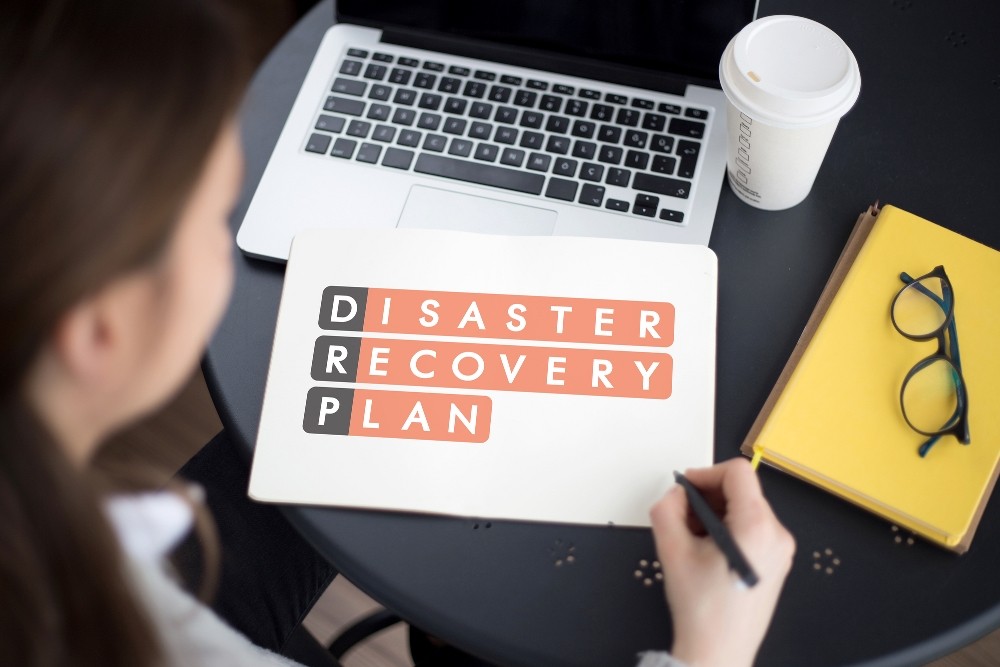What is a Disaster Recovery Plan
hile you might have heard the term disaster recovery plan used in reference to other areas of your business before, you also need to think about this in terms of cybersecurity. A disaster continuity plan will help to protect you should a major disaster occur. Check out our firewall page here for more information about the products, which will be a huge part of this plan. They’ll help to avoid issues in the first place, offering your business years of protection during the most challenging of times.

What is a Disaster Recovery Plan?
A disaster recovery plan is sometimes referred to as an IT disaster recovery plan. It’s designed to help a business to execute their recovery process quickly and efficiently if any form of issue was to occur within their workplace. It is needed within any business that has an IT infrastructure, which is pretty much every business in the world today. It promotes speedy recovery, which is why a disaster continuity plan is so important to help your business get back on its feet following a disaster of any type.
The disaster recovery plan will lay out what your team should do before, during, or after the attack. As well as cybersecurity attacks, these plans can help you to recover following a natural disaster, such as a hurricane or tornado. You’ll also find these are used to discuss terrorism backup plans, which are sadly becoming more of a concern for businesses. No matter what situation your team find themselves in, a network disaster recovery plan can help to get you back to work as soon as possible.
Who Should Have a Disaster Recovery Plan?
Businesses of all shapes and sizes need a disaster recovery plan in order to manage their data. A lot of this data is critical for a business to survive, so you need to ensure the right steps are taken to avoid these issues. No matter how secure you believe your business is, cyberattacks are becoming more complex year after year. This plan can help provide a backup plan for any type of attack. It will be part of your wider business continuity plan, which discusses every element of your business and how you’ll react after a disaster.
Most companies have a plan in place for other types of issues, but they often don’t touch on the IT elements of the business. These are now so crucial to businesses, which is why a separate plan is needed with your IT systems in mind. You’ll need to analyse how your business operations will be impacted if you lose any of your data or hardware. In this situation, you’ll then need to have a backup plan ready to implement, which you can use to get back to the most important tasks you have to do. You can learn from past issues and lessons in order to create this plan, as well as read case studies from other businesses in your industry.
As well as focusing on the recovery after a disaster, you’ll find that business continuity and disaster recovery is something you need to think about before anything even happens. You need to train your team to ensure they know what to do each day to avoid issues. From there, they also need to be briefed about how to react if an emergency was to occur. The more people who know how to look out for cyberattacks, the more likely you’ll be to protect your company in the future. Products such as the SonicWall Gen 7 are here to support you and your BCDR with that task and minimise the chance of an attack in the first place.
Goals in Your Disaster Recovery Plan
A huge part of your business continuity strategy is writing down the goals you have in mind for your disaster recovery plan. You’ll find that these should state what you hope to achieve following a disaster. This should focus on your recovery time and the objective of recovery. You’ll want to state how much data you can afford to lose and how quickly you need to get everything back up and running to avoid disrupting your business. A network firewall is a huge part of this process and will help to reduce the chance of extensive downtime for your business. For small and medium-sized businesses, we highly recommend investing in a SonicWall firewall, which will protect your business from potential disasters.
By creating a disaster recovery plan, you’ll help to prepare yourself for any potential issues in the future. We encourage you to invest in a SonicWall firewall, which will be one of the main components of this plan. No matter what size of business you operate, it’s never too late to take action to avoid future issues and protect your business for years to come.
Comments
No posts found


